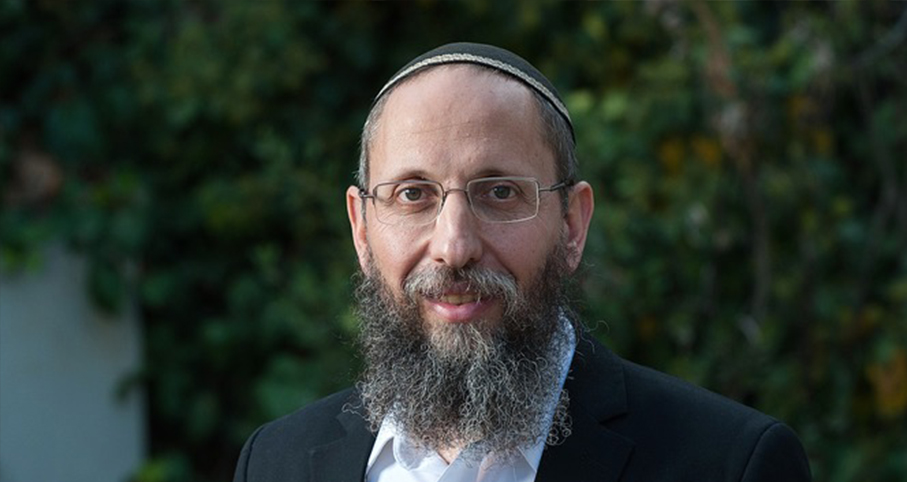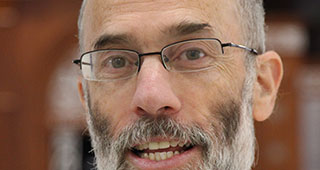Beit Midrash
- Sections
- Chemdat Yamim
- Bemare Habazak - Rabbis Questions
We will start with a quick biographical look at Rav Yehoshua Neuwirth, whose life was symbolic of Jewish history of the last century. His father, Rav Aharon Neuwirth, served as rabbi in important communities in pre-war Germany, including Mainz and Berlin, and later in Yaffo. Most of the family survived the Holocaust, hiding in Amsterdam, amidst miracles. After the war, a teenaged Rav Yehoshua decided to move to Eretz Yisrael and resume his rabbinic studies. Organizers said that the illegal immigration boat to Palestine had to leave on Shabbat, and he decided that the situation justified the violation of Shabbat due to pikuach nefesh. At that time, he promised himself that if he would make it to Israel, he would do something to glorify Shabbat observance.
Upon arriving in Eretz Yisrael, he enrolled in Yeshivat Kol Torah, founded by German Jewish rabbis, and became close there with his life-long rabbi, Rav Shlomo Zalman Auerbach, zt"l. In addition to spreading and applying much of Rav Auerbach’s scholarship, as finds expression in Shemirat Shabbat K’hilchata, Rav Neuwirth was also his student in regard to modesty and active concern for people, prominently including the poor.
The first edition of Shemirat Shabbat K’hilchata came out when Rav Neuwirth was still a sparsely known talmid chacham in his thirties. The sefer stood out for being user-friendly and making the laws of Shabbat accessible to the broad public. This he did in a few ways. One was to change the focus of the choice of halachot. The Rambam and the Shulchan Aruch are strongly based on discussions in the Talmud, written 1500 years ago. Yet, much of the subject matter relates to practices, foods, and utensils that are no longer prevalent. Many of today’s pressing issues relate to situations and technologies that developed in recent times, and Shemirat Shabbat K’hilchata addresses them very deliberately and thoroughly.
Another innovation, which had roots in the Mishna Berura, is the breakup between the body of the work, in which practical halacha is clearly, succinctly presented, and the footnotes, which contain the sources and halachic analysis. This system, which we too employ in Bemareh Habazak, makes the study of the basic halacha accessible to those who cannot follow the intricate world of halacha and helps the more developed scholar with better organization.
The sefer also has a detailed index, enabling one to easily find the discussion of the practical application for which he needs a ruling. This is a great improvement, taken from the world outside of Torah scholarship, over previous seforim, which had no more than a table of contents, perhaps following an order such as that of the Shulchan Aruch. A final point that opened to a wider target audience the laws of Shabbat, and through his emulators, many other areas of halacha, is the style of writing. Instead of the classical rabbinic language, with a mix of Hebrew and Aramaic, with difficult, run-on sentences, Shemirat Shabbat K’hilchata is written in clear modern Hebrew. The index and the editing were both provided by Rav Neuwirth’s friend of many years, Rav Asher Wasserteil, who while yeshiva trained, was not a rabbi by profession. We are proud to have a long-term relationship with this unsung partner in the revolution in the presentation of halacha, as Rav Wasserteil, father of Eretz Hemdah’s long-time chairman of the board, also edited the first five volumes of Bemareh Habazak.
May Rav Neuwirth’s life works, and those that he inspired, bring him eternal merit.

Bemare Habazak - Rabbis Questions (627)
Various Rabbis
65 - Finding Money in One’s Pocket on Shabbat
66 - A Glance at the Man Who Revolutionized the World
67 - Statute of Limitation on Hagomel After Birth
Load More

Ask the Rabbi: Beracha when Lighting for a Neighbor
Rabbi Daniel Mann | Kislev 5786

Ask the Rabbi: Having a Non-Jew Build a Sukka and Assemble Arba’a Minim
Rabbi Daniel Mann | Tishrei 5786

Ask the Rabbi: What May One Do before Havdala after Yom Kippur?
Rabbi Daniel Mann | Tishrei 5786





















